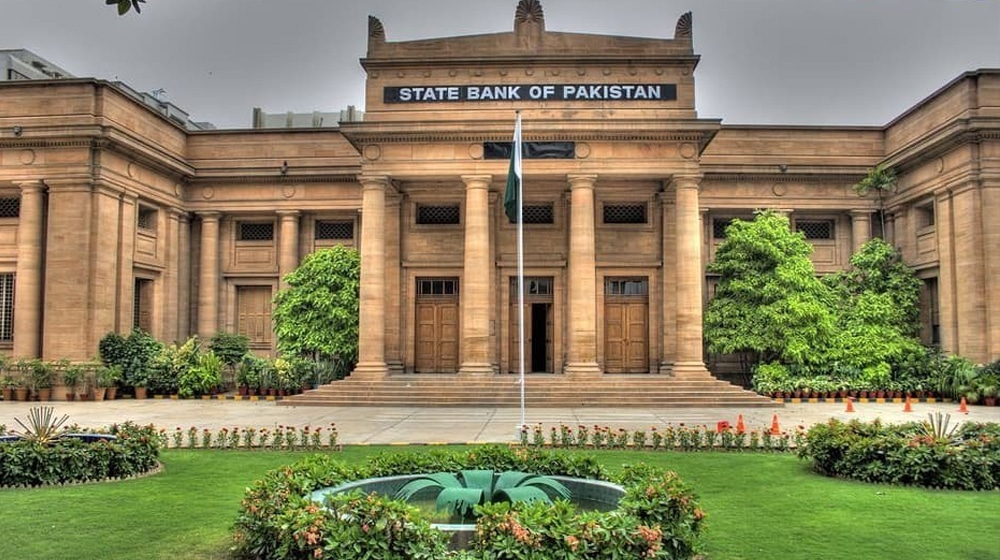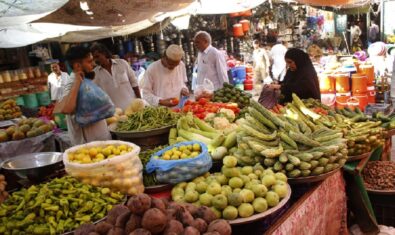The State Bank of Pakistan (SBP) has projected that the GDP growth rate will settle between 2 and 3 percent in the current financial year 2023-24 as compared to the target of 3.5 percent. The GDP growth stood at 0.3 percent in FY23, 6 percent in FY22, and 5.8 percent in FY21.
The central bank today released its annual report on the State of Pakistan’s Economy for the fiscal year 2022-23.
According to the report, macroeconomic indicators of the country will fail to achieve the targets, including export receipts to be between $25.5 billion to $26.5 billion rather than $30.5 billion; inflows of remittances are expected to be around $29 billion against $30 billion target for FY24, while the fiscal deficit will go beyond 7-8 percent of the GDP against target of 6.5 percent.
The imports are likely to slowdown to $50-$52 billion against $58.5 billion target due to lower prices of imported commodities and their comparatively lesser demand in the domestic market.
SBP projects the current account deficit to fall in the range of 0.5–1.5 percent of GDP in FY24. The CPI inflation will continue to be stubborn at 21-22 percent in FY24.
A tepid recovery in economic activity is likely to shore up revenue collection during FY24. In FY24, the government has envisaged boosting revenues by increasing PDL to Rs. 60/liter, announcing higher rates on top income tax brackets, builders, developers, and property, and introducing additional GST on unregistered businesses.
The outlook for the external account improved at the start of FY24. The finalization of the Stand-By Arrangement with the IMF was instrumental in reviving the confidence of multilateral and bilateral creditors, as well as international investors, and led to sizeable foreign inflows during the first two months of FY24.
Financial Year 2022-23 At a Glance
Pakistan’s economy faced multiple challenges during FY23, as longstanding structural weaknesses exacerbated the impact of successive domestic and global supply shocks of unprecedented nature.
The country’s macroeconomic situation had already begun to deteriorate since the second half of FY22 in the aftermath of the Russia-Ukraine conflict, elevated global commodity prices, and an unplanned fiscal expansion. The situation worsened during FY23 owing to floods, delay in the completion of the 9th review of the IMF’s Extended Fund Facility (EFF) program, continuing domestic uncertainty, and tightening global financial conditions.
Particularly, the devastating monsoon floods significantly dented economic activity, fueled inflationary pressures, increased stress on external accounts, and widened fiscal imbalance because of spending on relief efforts. Similarly, the uncertain global economic and financial conditions, softening – but still elevated – global commodity prices, higher debt servicing, and reduced external inflows had implications for various sectors of the economy.
The confluence of these developments substantially weakened Pakistan’s macroeconomic performance during FY23. The real GDP growth fell to the third-lowest level since FY5, whereas average National CPI inflation spiked to a multi-decade high. While the current account deficit narrowed considerably, limited foreign inflows maintained pressures on the external account leading to a decline in SBP’s FX reserves.
Meanwhile, reflecting the unsustainable fiscal policy stance of the past many years, a sharp increase in interest payments, persistently large energy subsidies, and lower-than-targeted tax collection contributed to less than envisaged fiscal consolidation during FY23.
The report notes that Pakistan’s economic performance in FY23 highlights the importance of addressing perennial structural impediments that pose serious risks to the country’s macroeconomic stability. Foremost among these are inadequate and slow tax policy reforms that have constricted the resource envelope, even for meeting current expenditures.
On the other hand, inefficiencies in public sector enterprises (PSEs) have led to a permanent drain on fiscal resources. These have squeezed space for development spending required to enhance the economy’s productive capacity. The anemic investment in physical and human capital as well as R&D has impeded the development of a technology-intensive manufacturing base and the next level of value-added exports.
Moreover, stagnant crop yields and lack of attention to the development of the food supply chain and to address food market imperfections have led to sustained reliance on imported food commodities. These trends underpin the unsustainable current account balance, which has increased the country’s vulnerability to global supply shocks.
Recommendations
The report indicates that this situation requires the initiation of broad-ranging reforms to address various sectoral imbalances to ensure the availability of resources for economic growth and development. Specifically, expediting tax policy reforms and speedy implementation of governance reforms in PSEs is instrumental in creating fiscal space for public investment in human and physical capital.
Furthermore, there is also a need to create a conducive environment to support foreign direct investment in exportable sectors, and to encourage technology transfers. Similarly, agriculture sector reforms are required to alleviate import reliance and for achieving price stability. There is a need to expedite these reforms to achieve the high and sustainable economic growth required to absorb the new entrants in the labor market, improve social welfare, and raise the general standard of living in the country.
In this context, the availability of factual information on key macroeconomic variables, markets, businesses, and individual welfare are important ingredients for evidence-based policymaking. This report includes a special chapter on the need to streamline the state of Pakistan’s National Statistical System (NSS) and identifies some suggestions for NSS reforms.
The report highlights that Pakistan’s economic situation has started to show some early signs of improvement. The country was able to secure a $3.0 billion Stand-By Arrangement (SBA) from the IMF, towards the end of FY23, which helped in alleviating near-term risks to the external sector. The high-frequency indicators are suggesting a bottoming out of economic activity from July 2023.
The withdrawal of guidance on import prioritization, alongside gradual ease in FX position, is expected to somewhat ameliorate the supply chain situation and lift growth in LSM as well as exports. Moreover, an expected rebound in cotton and rice production will support agriculture growth in FY24.
The slightly improved global and domestic growth prospects are expected to bolster foreign exchange earnings from exports of goods and services.





















